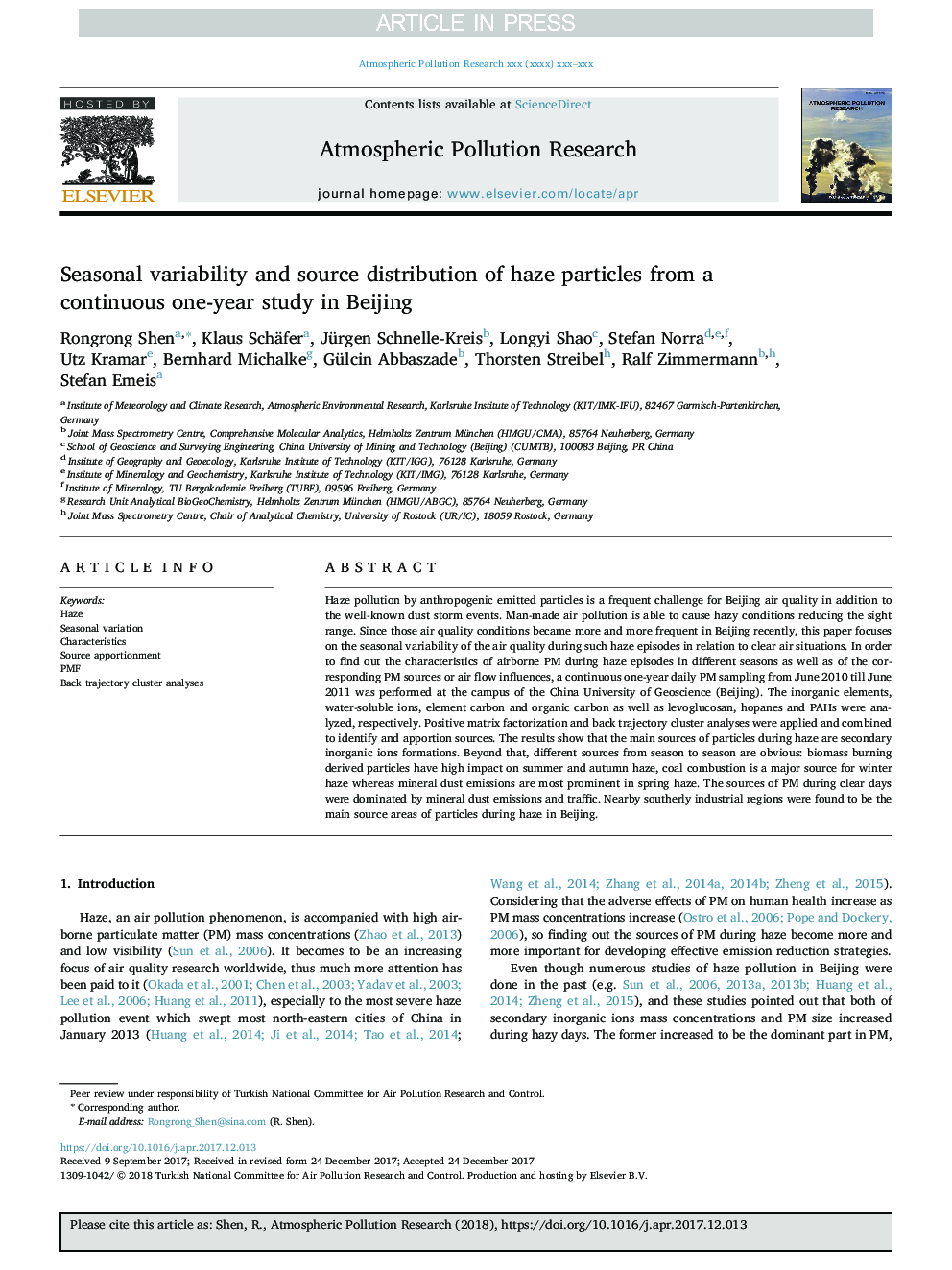| Article ID | Journal | Published Year | Pages | File Type |
|---|---|---|---|---|
| 8862608 | Atmospheric Pollution Research | 2018 | 7 Pages |
Abstract
Haze pollution by anthropogenic emitted particles is a frequent challenge for Beijing air quality in addition to the well-known dust storm events. Man-made air pollution is able to cause hazy conditions reducing the sight range. Since those air quality conditions became more and more frequent in Beijing recently, this paper focuses on the seasonal variability of the air quality during such haze episodes in relation to clear air situations. In order to find out the characteristics of airborne PM during haze episodes in different seasons as well as of the corresponding PM sources or air flow influences, a continuous one-year daily PM sampling from June 2010 till June 2011 was performed at the campus of the China University of Geoscience (Beijing). The inorganic elements, water-soluble ions, element carbon and organic carbon as well as levoglucosan, hopanes and PAHs were analyzed, respectively. Positive matrix factorization and back trajectory cluster analyses were applied and combined to identify and apportion sources. The results show that the main sources of particles during haze are secondary inorganic ions formations. Beyond that, different sources from season to season are obvious: biomass burning derived particles have high impact on summer and autumn haze, coal combustion is a major source for winter haze whereas mineral dust emissions are most prominent in spring haze. The sources of PM during clear days were dominated by mineral dust emissions and traffic. Nearby southerly industrial regions were found to be the main source areas of particles during haze in Beijing.
Related Topics
Physical Sciences and Engineering
Earth and Planetary Sciences
Atmospheric Science
Authors
Rongrong Shen, Klaus Schäfer, Jürgen Schnelle-Kreis, Longyi Shao, Stefan Norra, Utz Kramar, Bernhard Michalke, Gülcin Abbaszade, Thorsten Streibel, Ralf Zimmermann, Stefan Emeis,
